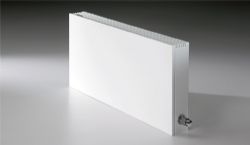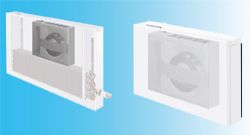With the right heating and ventilation system in play, teachers, parents and students can be assured of an effective and healthy learning environment, says Paul Kingswell
In recent years, schools across Europe have made substantial efforts to improve their indoor air quality (IAQ). This movement is due in most part to the increasing awareness of the negative effects of poor IAQ on students' health and achievement levels.

Concentration of CO2 is a key factor determining IAQ, indicating the number of occupants and current ventilation effectiveness. Numerous studies have consistently found that symptoms such as headaches, poor concentration, drowsiness, lethargy and nausea are triggered by poor IAQ. Studies undertaken across Northern Europe suggest that every day hundreds of teachers and thousands of pupils could experience notable ill effects brought on by poor IAQ in the classroom.
Furthermore, tests conducted in the Netherlands during the middle of the school day when concentrations of CO2 tend to be higher demonstrated that schoolchildren performed language and math tasks better in demand controlled ventilation conditions than when only natural ventilation was provided.
A lack of air movement also adds to the build-up of high levels of contamination, including harmful germs and microbes.

Building Regulations Part F (Ventilation), as well as Building Bulletin 101 (Ventilation of school buildings) reflect concerns over IAQ, and specific requirements for schools include regulating fresh air rates, which should not be less than 3 l/s person, and an average indoor CO2 level of no more than 1,500 parts per million (ppm) and not exceeding 5,000 ppm during the teaching day. Similarly, these regulations cover strict temperature requirements.
During the summer, the temperature difference between the indoors and outdoors must be no more than 5 deg C, temperature in normal classrooms must not be lower than 18 deg C, and the internal air temperature of an occupied classroom must not exceed 32 deg C.
Opening windows not sufficient
Unfortunately, too often teachers think that simply opening a window is sufficient for increasing ventilation. However, this is not the case. Opening a window lets in both freezing air during the winter months and distracting noises from outside all year round. Indeed, BREEAM proposes that opening windows should not be an option when any part of the building structure is within 5m of a roadway.
Nor is 'natural ventilation' a vastly more sustainable option - in comparative Energy Performance Certificate calculations, Jaga's OXYGEN Dynamic system indicated only an 0.67 per cent increase in KgCO2/m2 per annum when compared with a manual system relying on an occupant opening a window, and yet provides demand controlled heating, ventilation and night time free cooling. Installing separate ventilation and heating systems can be an impractical option for schools, with high installation and running costs.
The answer is combined heating and ventilation - specifically, a displacement ventilation system with balanced supply and extraction, plus an integrated low-water content heating system. With a displacement ventilation system, the controlled supply of fresh air at low level and extraction of stale air at high level on opposite sides of the classroom ensure optimal IAQ for pupils, and offers an energy efficient solution. A low-mass, low-water content heat emitter will also be highly energy efficient by nature of its rapid response times; as well as being highly suited to low water flow temperature heat pump applications.
Achieve specified ratings
Energy efficiency, including the reduction of CO2 emissions and energy monitoring, is now a condition of capital funding for UK schools and academies. Under the Building Research Establishment Environmental Assessment Method (BREEAM) 2011 - which benchmarks best practice in sustainable building design, construction and operation - all new build and refurbishment projects at schools and academies must achieve specified ratings.
But the need for an effective heating and ventilation solution that optimises IAQ goes beyond mere compliance. A generic, one-size-fits-all approach to ensuring good IAQ is not enough - there are too many variables in play, and ventilation should be managed on a room-by-room basis. With CO2 sensors, IAQ can be constantly monitored; and with a centralised controller, refresh units can be directed to increase or decrease the amount of fresh air being delivered.
Direct admission of filtered air into each room via external air ducts rather than through central supply ducts, ensures a clean, healthy, and pollutant- free indoor environment, with the added benefit of an increase in energy efficiency by up to 28 per cent. Ideally, there should also be locally installed override options, giving a teacher the option to boost ventilation if required.
// The author is commercial manager at Jaga //